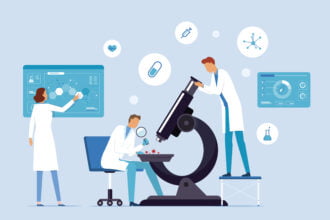It has been a remarkable decade for the biopharmaceutical industry. New biopharmaceuticals and blockbuster medications have been developed one after the other. A business model known as “contract development manufacturing organization (CDMO)” has evolved due to the growing demand for biopharmaceuticals. This company is responsible for the research and manufacturing of pharmaceutical production techniques.
Coming to Cell Therapy
The cell source for CGT products might be either primary or modified. When the number of patients and dosage requirements are limited, or when tailored, autologous medicines are generated, drug developers frequently use primary cell lines.
It’s common for researchers to employ modified cell lines to target bigger patient groups or manufacture exosomes or viral vectors from the cells. Cell therapy contract manufacturers such as Scorpion Biological Services make sure that the technical, regulatory, access, and licensing considerations are taken care of. There are many advantages to working with CDMOs while developing a cell-based therapeutic (CBT). When it comes to tissue processing, cell banking, or cell line engineering, the CDMO can help.
As CGT cell sources’ regulatory landscape continues to evolve, working with an experienced CDMO early on can be beneficial. Licensing fees may apply to the commercial use of commercially available cell sources and vectors that are commonly used in academic and research contexts.
Additionally, primary cell and tissue sources for preclinical development might be quite difficult to obtain. CDMOs might use existing connections with public and private organizations to obtain these resources.
Regardless of where the initial cells come from, they must be extensively characterized throughout preclinical development to determine their quality and identity. Process and assay development programs at CDMOs can be tailored to meet the specific requirements of biological input materials.
Aids in Automation
During clinical trials, manufacturing process stability and scalability are two of the most important considerations for cell therapy manufacturers. Process variability, ease of scaling up, and decreased cycle time are equally important motivators for automating their manufacturing and supply chain processes. For example, a CDMO/CMO with EBR capability that is already a completely automatic facility can assist in achieving these goals.
As a result of the negative impact of Covid-19, cell therapy sponsors have had to put a halt to clinical trials and overcome supply chain obstacles. Both in-house and agreement manufacturers have imposed strict frameworks to ensure the safety of their employees in the manufacturing domain.
To meet delivery deadlines, manufacturers who had embraced automation quickly rebounded. The four-eyes-principle steps could be drastically reduced because fewer hands were touching the paper or the final assembly, lowering the risk of contamination.
Technology Transfer That Is Well-Organized and Documented
Effective and efficient technology (tech) transfer strategies ensure that processes are successfully transferred to a CDMO’s environment. Tech transfer is a complicated process requiring coordination and communication between CGT developers and the CDMO. Transparency is essential. Knowing what a CDMO requires upfront can help you set clear expectations.
When working with a CDMO, tech transfer is more than just a handover; it starts a long-term partnership. To ensure the smoothest possible transmission of information, it is critical to create a strong, cooperative relationship with the CDMO’s principal contact and maintain quality oversight on an ongoing basis. CGT developers should aim to participate in the tech transfer process throughout to ensure that both companies thoroughly document their goals and developments.
Tech transfer documentation aims to increase the biomanufacturing tech transfer process’s efficacy, efficiency, quality, and compliance. A rigorous, dependable technology transfer approach will go a long way toward ensuring success in technical and business areas.
Tech transfer paperwork is a crucial reference that serves as the foundation for developing standard operating procedures (SOPs). This process and product transfer plan outline key characteristics such as materials, analytical processes, and vital quality qualities (CQAs).
The more explicit the process details are, the more useful this document will ensure a smooth technology transfer. This documentation will be crucial if the CGT team decides to bring a process back in-house for commercial production.
CDMO is Compliant
For all biologics, many of the parameters you listed for CDMO selection are critical: e.g., technical skill and knowledge, quality; timetable; facility availability; cost; and communicative capability.
For CGT manufacturing, how do the selection criteria change? On the other hand, technical and regulatory environments in the CGT business are evolving at a rate far greater than that of the more established biologics industry. Due-diligence visits should include a more in-depth discussion of CMO knowledge, particularly viral vectors and cell culture.
Final Words
Cell therapy companies can be incentivized to look for third-party partners who hold technical, manufacturing, and regulatory competence by the pressure they are under to innovate and optimize their manufacturing processes.
One example of a third-party partner would be cell therapy contract and development manufacturing organizations (CDMOs). Nearly thirty contract manufacturing organizations (CDMOs) that specialize in providing manufacturing and clinical trial support for cell therapy companies can be found today.









